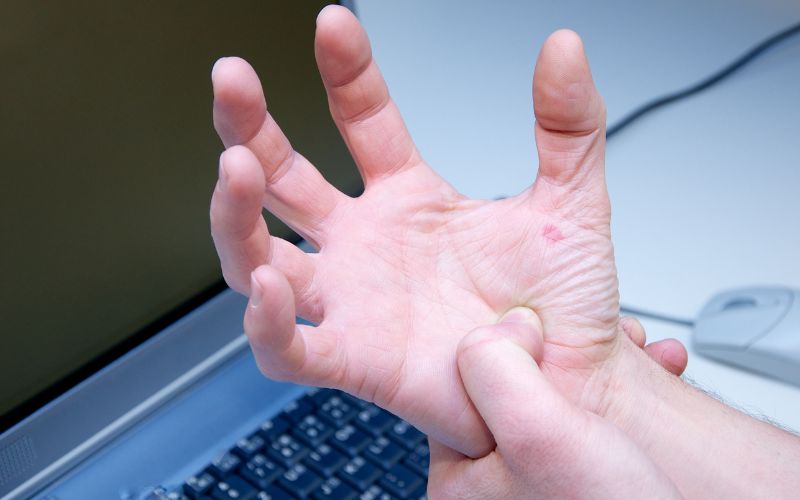Carpal Tunnel Syndrome (CTS) is a prevalent condition that affects millions of people worldwide. It is a type of repetitive strain injury resulting from the repeated use or overuse of the hands and wrists. When the Carpal Tunnel becomes compressed or inflamed, it can cause pain, numbness, tingling, and weakness in the hand and wrist. Proper ergonomics can help prevent and manage CTS effectively. In this article, we’ll discuss Carpal Tunnel Ergonomics and provide practical tips on how to avoid CTS and manage its symptoms.
Maintaining Proper Hand and Wrist Positions:
Maintaining proper hand and wrist positions is crucial in preventing and managing Carpal Tunnel Syndrome. Here are some tips to ensure proper ergonomics:
- Keep your wrists in a neutral position, not bent up or down.
- Keep your hands and fingers relaxed, and use your entire arm to move the mouse, not just your wrist.
- Take frequent breaks and stretch your hands, fingers, and wrists.

Using Ergonomic Equipment for Carpal Tunnel Syndrome:
Using ergonomic equipment can help prevent and manage CTS. Here are some examples of ergonomic products:
- Ergonomic keyboard and mouse that supports a neutral wrist position.
- Wrist rest or padded mouse pad to cushion your wrist and reduce pressure on the median nerve.
- Adjustable desk and chair that allows you to maintain a proper posture and wrist position.

Exercising to Reduce Strain and Pain:
Regular exercise can help reduce the strain and pain associated with Carpal Tunnel Syndrome. Here are some simple exercises that you can do at your desk:
- Wrist Stretch: Hold your arm out with your palm facing down, and use your other hand to gently pull your fingers back towards your wrist. Hold for 15-30 seconds and repeat on the other hand.
- Fist Clench: Make a fist, hold it for 5 seconds, and then release. Repeat 10-15 times.
- Finger Taps: Tap each finger to your thumb, one at a time, as quickly as you can. Repeat 10-15 times.

FAQs about Carpal Tunnel Syndrome
The symptoms include pain, numbness, tingling, and weakness in the hand and wrist.
People who perform repetitive hand and wrist motions, such as computer work, assembly line work, and musicians, are at higher risk.
In most cases, Carpal Tunnel Syndrome can be managed with proper ergonomics, exercise, and, in some cases, medical treatment.
Carpal Tunnel Syndrome is a common condition that can affect anyone who performs repetitive hand and wrist motions. However, by practicing proper Carpal Tunnel Ergonomics, you can prevent and manage CTS. Remember to maintain proper hand and wrist positions, use ergonomic equipment, and perform exercises to reduce strain and pain.
Taking breaks and stretching your hands, fingers, and wrists is also essential in preventing Carpal Tunnel Syndrome. Investing in ergonomic equipment, such as a keyboard and mouse that support a neutral wrist position, can be highly beneficial in reducing pressure on the median nerve and preventing Carpal Tunnel Syndrome.
By prioritizing your health and well-being and practicing proper Carpal Tunnel Ergonomics, you can avoid overuse and minimize the risk of developing CTS. With the right tools and knowledge, you can create a workspace that supports your body and reduces the risk of developing Carpal Tunnel Syndrome.

Owner of a company for consulting and building ergonomic spaces. Offices, lecture halls and more. Following a serious back injury, Jeff realized the importance of taking care of the body even while working and decided to delve into the subject and finally opened a company whose entire purpose is to help people take care of themselves even while working.



